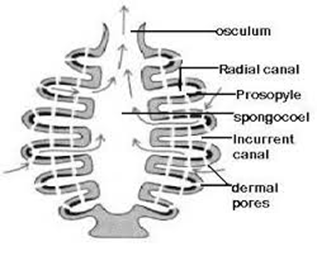DNA Fingerprinting Procedure , Advantage & Application | Biology
DNA Fingerprinting
Fingerprinting - Almost every individual cell in our body contains DNA which is 99.9 % the same and the remaining .1 percentage is unique DNA which is different in every individual. This .1% is based on the VNTR sequence. The full form of VNTR is the variable number of tandem repeats. For getting a better understanding of it's let's take an example, A and B are two persons. A has a DNA sequence of ATGC while B has ATTGC. The double number of T makes person B different from person A.
How to take a sample - For creating DNA Fingerprinting the sample of DNA is collected, collated, and used to match another sample of DNA that may have been found at the scene of the crime. This technique was developed by British geneticist Alec Jeffrey in 1984 who recognizes that every individual has a unique pattern of minisatellite.
Procedure - A DNA fingerprint is the same for every cell, tissue, and organ of an organism. You can not be altered by any known treatment. This is a laboratory procedure consist of following steps -
Isolation Of DNA - The DNA is isolated in a small amount from victims of blood cells or hair.
Cutting, Sizing and Sorting Of DNA - Restriction enzymes are used to cut the DNA at specific places. If there is a change in the cutting site then it will stop the enzyme from cutting the DNA. Thus a very small difference in the DNA of two individuals can result in the cut pieces of DNA of different sizes and in turn cause the fingerprints of the two individuals to differ.
Electrophoresis - The DNA is separated according to size by gel electrophoresis. Electrophoresis is a laboratory procedure in which DNA pieces are sorted by size. In this method, the DNA was loaded into the well and electric current is applied. The negative charge DNA move towards positive charge cathode through the gel. The small DNA fragments move faster than large DNA fragments. Now the electric current switch off and in this way, the DNA fragments are separated through electrophoresis.
Transfer Of DNA - The DNA pieces are transferred to the nylon sheet by placing agarose gel and nylon sheet next to each other overnight.
Probing - Probe is a fragment of DNA that can be radioactively labeled. The DNA fingerprinting is generated by adding a tagged probe to the nylon sheet. The probe only attaches to the pieces of DNA that are complementary.

DNA Fingerprints - Now this probe which is tagged is visualized by exposing the nylon membrane to the X-Ray film. When developed, the resultant visible pattern is the DNA fingerprint looks like a bar code in the grocery counter.
Advantage Of DNA Fingerprinting -
- DNA fingerprints can not be altered by any method.
- Every individual has its own unique DNA fingerprints.
- DNA fingerprints can not be duplicated.
- It is a very reliable technique for the identification of an individual.
Drawbacks Of Fingerprinting -
- The cost of testing is very expensive.
- Error in hybridization or probing will give wrong results.
- If there is contamination in the sample then results also affected.
Application Of DNA Fingerprinting -
- Forensic Science - DNA fingerprinting is very helpful in detecting criminal cases like murder, robbery, rape, kidnapping, etc.
- Diagnosis Of Paternity and Maternity - DNA profiling can be used to identify whether the two people are related to one another. Thus is helpful for solving paternity or maternity disputes.
- Diagnosis Of Diseases - DNA profiling is used in detecting genetic disorders caused in the body.
- Protection Of Legal Right - DNA fingerprinting is used to legally protect new varieties of plants and animals.
- Identification Of Exchange Child - In hospitals some times baby are exchanged. DNA testing helps in the identification of real children.




fantastic explanation of dna fingerprinting.like that i want to study it.
ReplyDeletethank you very much sir or mam
thank you
Delete